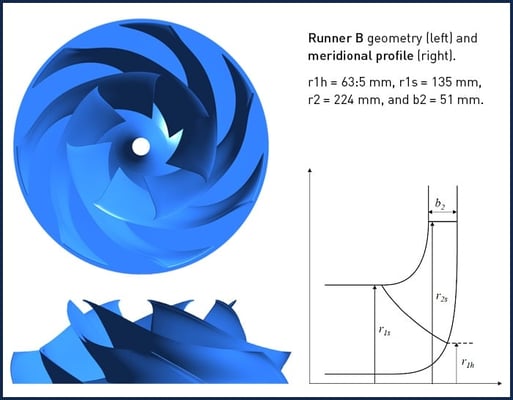This paper has been presented 'Optimisation of a pump-as-turbine runner using a 3D inverse design methodology' at the Symposium on Hydraulic Machinery and Systems in Kyoto, Japan.
One of the society's biggest current challenges is the mitigation release of greenhouse gas emission into the atmosphere while setting the basis for a sustainable development. As a result, climate-related factors are currently driving the adaptation of the power generation and energy storage sectors.
Pumped-storage hydroelectricity is today the world’s largest contributor to grid energy storage and its success is based on the design and ability of an impeller to perform as either a pump or a turbine by reversing the rotation direction. In this paper, we discuss the performance of a pump-as-turbine runner for pumped storage hydroelectricity applications. This is analysed with a specific focus on the trade-off between the pump and the turbine working modes.
The principles of the pump and turbine turbomachinery components are well known. However, the design of components for challenging turbomachinery-based schemes like the ones explained requires a flexible method that enables the exploration of trade-offs. We discuss the optimization of a pump-as-turbine runner using a 3D inverse design method. The baseline design is based on an existing runner designed with TURBOdesign1 this is then optimised by the genetic algorithm in Isight.
In the work presented, the performance is optimised using TURBOdesign Optima and keeping the same meridional profile, stacking characteristics and work distribution in the pump mode. The baseline runner design will be further optimised by minimising the secondary flow and profile loss factors.
This paper will provide you with an understanding on how you can achieve a better and more efficient design of a pump-as-turbine case with multiple-objectives and multi-points conditions using the inverse design code of TURBOdesign1 and TURBOdesign Optima to optimise the performance.
Related articles:
- How to use multi-point optimization for solving challenging modern turbomachinery design
- How coupling 3D inverse design method TURBOdesign1 with ANSYS Workbench can help meet the challenging energy efficiency requirements on pumps
- Turbomachinery Blade Design using 3D Inverse Design Method, CFD and Optimization Algorithm
Mehrdad Zangeneh
Mehrdad Zangeneh is Founder and Managing Director of Advanced Design Technology and professor of Thermofluids at University College London.
View All Articles







Share This Post